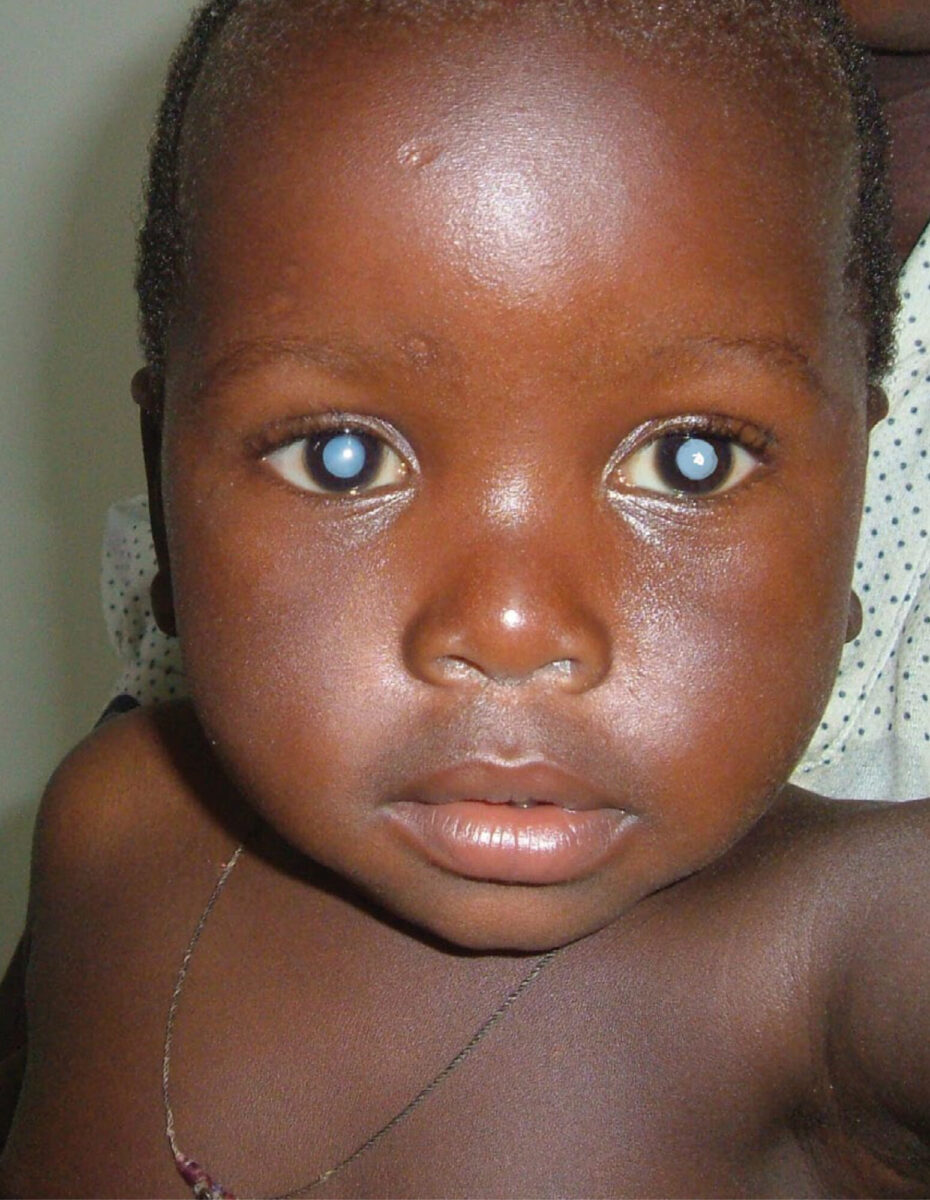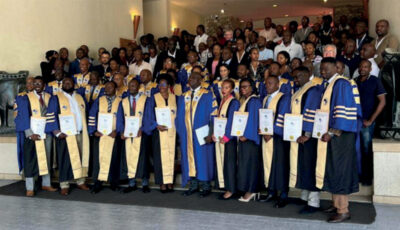Main content
Vision loss and blindness in children is rare, even in Africa. While accurate estimates are not available, it is likely that, in most of Africa, less than one child in 5,000 is blind. [1] That said the impact of vision loss and blindness in childhood can be significant; on the children, their families, and societies at large the impact can endure for decades. Due to successful vitamin A supplementation and measles immunization programmes in many countries, corneal blindness has reduced significantly. As a result most incident blindness and vision loss in children is no longer preventable; instead, it is a mix of treatable and untreatable causes. The major treatable causes include congenital or developmental cataract, glaucoma, and refractive error.
Treatment cataract not easy
The etiology of congenital or developmental cataract in many of these children remains poorly understood. While rubella, a treatable condition, does contribute to some cases of congenital cataract, evidence suggests that its contribution is not more than 20%. Managing the present causes of blindness and vision loss in children requires sophisticated services to provide good quality surgical, medical, and optical interventions. Also, these children require comprehensive care throughout their childhood in order for them to achieve their full visual potential. Unlike cataract surgery in adults, managing cataract in children is a lifelong undertaking. The links between the health care services and educational services need to be strengthened to ensure that these children achieve their educational potential. One aspect of dealing with childhood vision loss is still true: children with serious eye disease need to be seen by a qualified eye care provider as soon as possible because of amblyopia prevention. In many countries, particularly in eastern Africa, “Child Eye Health Tertiary Facilities” (CEHTF) have been established at key tertiary hospitals, each striving to serve a population of approximately 10 million. [2] These facilities need to be staffed by well-trained paediatric ophthalmologists, paediatric anaesthetists, optometrists, low vision specialists, and Childhood Blindness & Low Vision Coordinators. Ideally they will have strong links to the communities they serve in order to identify children in need of services as well as to ensure that children receive adequate health and educational follow-up.

What did we learn
Experience gained suggests that:
- Key community members (key informants) can be very effective in identifying and referring children in need of eye care services. Studies in a number of countries have demonstrated the impact of this approach and training manuals have been developed and disseminated. [3-5]
- Less success has been demonstrated in using general health workers to identify and refer children, whether through routine clinic activities such as immunization, or through community campaigns. [4,5] Currently, the knowledge and skills of general health workers regarding childhood vision loss is generally weak. [6] Every district hospital in Africa should have at least one trained clinical person dedicated to eye care. Their role is crucial to ensure that a sufficient diagnosis is made and proper referral done. They should have a strong relationship with the CEHTF both for referral and for follow-up.
- Where possible children need to be referred to a CEHTF for proper assessment and treatment. Since children require long-term follow-up, which may be difficult to always carry out at the CEHTF, a plan of action, tailored to each child and the clinical and educational environment needs to be adopted. This is one of the tasks of the Childhood Blindness & Low Vision Coordinator, who works alongside clinical personnel.
What is important for the general practitioner
For general clinicians working in Africa, some recommendations include:
- Find out where the nearest CEHTF is located, visit the facility, and establish a relationship with the relevant personnel.
- Assess the current knowledge and skills of eye care personnel in the area related to child eye health and provide upgrade training, as needed.
- Insert short educational messages in training of general health workers, particularly on the need to refer children, regardless of age, with serious eye problems to the relevant eye care providers as emergencies.
- In collaboration with the CEHTF consider conducting key informant programmes in the area.
- Do not forget vitamin A or measles related blindness; if corneal opacity secondary to vitamin A/measles is detected, this should be a trigger to report to health authorities. Corneal opacification is the “tip of the iceberg” and indicates a serious public health problem.
Continuing to reduce the burden of vision loss in children in Africa requires good planning, a comprehensive approach, good partnership, a strong link between all sectors of the health care services, a viable system for follow-up, and engagement with the educational sector. Only by including all these aspects will children be able to achieve their best visual and educational potential.
References
- Gogate P, Kalua K, Courtright P. Blindness in childhood in developing countries: time for a reassessment? PLoS Med. 2009 Dec;6(12):21000177.
- Agarwal PK, Bowman R, Courtright P. Child eye health tertiary facilities in Africa, J of AAPOS 2010;14:263-6.
- Shija F, Kalua K, Shirima S, Lewallen M, Courtright P. Using key informants to identify and refer children who need eye care services: A manual for Africa. KCCO/AED/USAID 2010. Free copy available. http://www.kcco.net/KItoidentifychildrenwhoneedeyecareAfrica-manual.pdf
- Shija F, Shirima S, Lewallen S, Courtright P. Comparing key informants to health workers in identifying children in need of surgical eye services. International Health 2012;4:1-3.
- Kalua K, Ng’ongola RT, Mbewe F, Gilbert C. Using primary health care (PHC) workers and key informants for community based detection of blindness in children in Southern Malawi. Hum Resourc Health 2012; Sept 27; 10(1):37.
- Kishiki E, Hogeweg M, Dieleman M, Lewallen S, Courtright P. Is the existing knowledge and skills of health workers regarding eye care in children sufficient to meet needs? International Health 2012;4:303-6.



















































